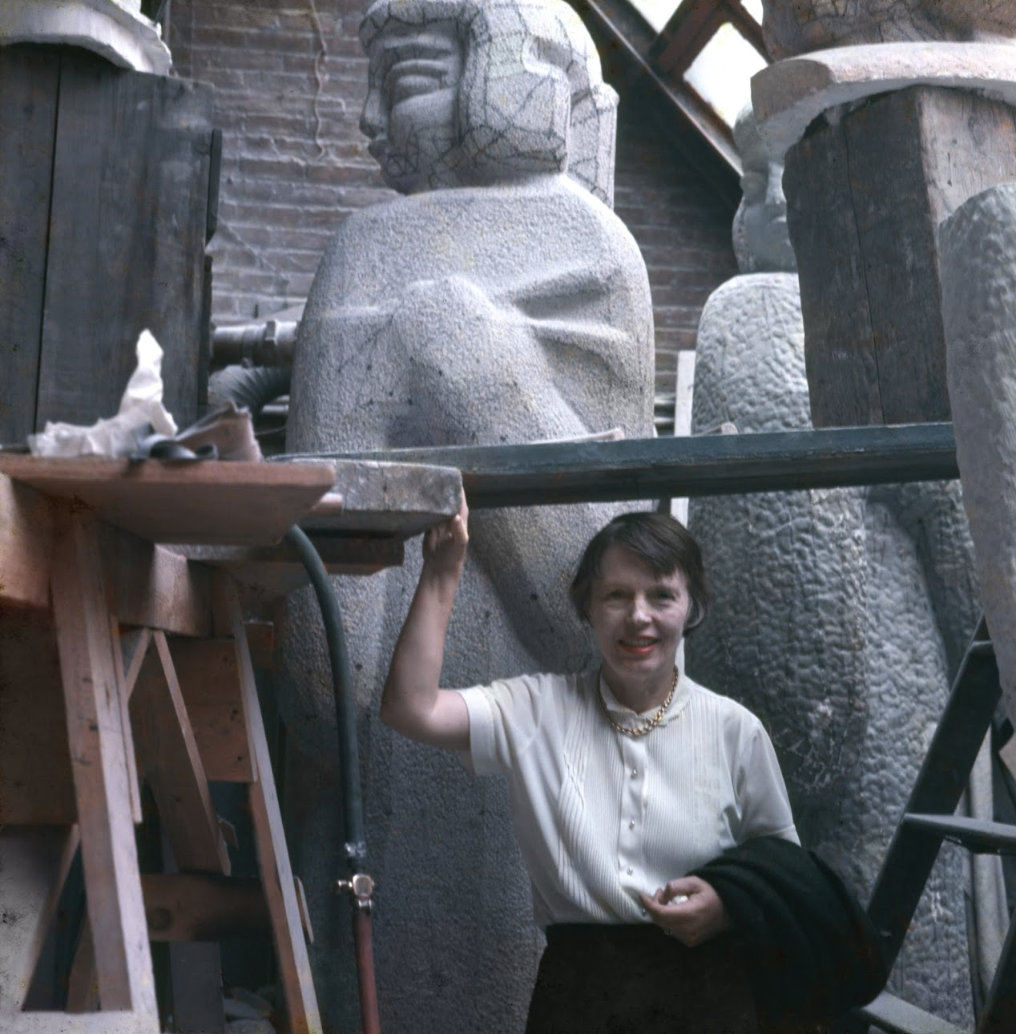An excerpt from PALMER, Vol 4, Ch. 2, Ahead of her Time by Alexa Brazilian…
There is a faded photograph of the sculptor Ann Weaver Norton, working in her lush garden in Florida in 1962. Her tiny, barely five-foot frame, dressed in a skirt suit, pearls, and a comical straw hat, is perched atop a 20-foot-high ladder supported by an elaborate wooden scaffold. With a hammer and chisel in her hand, she fine-tunes the face of a giant pink Norwegian granite statue— one of a grouping of monolithic, abstractly ancient-looking creatures Norton referred to as “The Seven Beings.” The snapshot is unusual for many reasons, but most of all because it depicts a woman in the early 1960’s creating a sculpture— an artistic realm that is still largely dominated by men— and because it was taken in the conservative enclave of West Palm Beach, not a place where unusual women did unusual things.
Though Norton was a dedicated working sculptor for over 40 years before her death from leukemia in 1982, her towering works, made of everything from brick and wood to bronze and marble, only began to receive national recognition in the 1970s. Her name finally appears in the Sunday Arts section of the New York Times on March 26, 1978, on the heels of her solo exhibition at the Clocktower, a nonprofit art institution in downtown Manhattan. The author, Grace Glueck, follows Ann through the winding coquina pathways of her two-acre home on the Intracoastal, just off the busy thoroughfare of Flagler Drive, where her imposing sculptures, which she built on site, reveal themselves at every turn. “The powerful brick megaliths, standing 20-feet-high, are hardly what you’d anticipate in the manicured environs of this society playground.” Glueck wrote. “As unexpected as Druidic ruins…[the art] doesn’t fit with the predictably pleasant art displayed in the high-flown galleries that line Worth Avenue in posh Palm Beach, just across the bridge and in the homes of those who winter here.”
To purchase PALMER Vol. 4, click HERE



